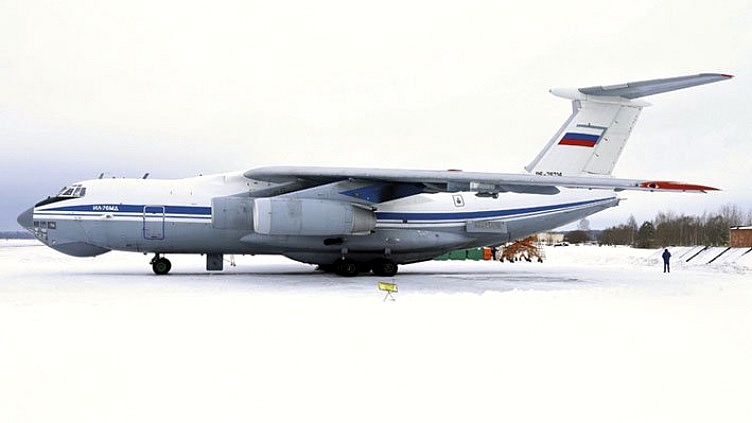The Italian Typhoons scrambled Tuesday were the fourth set of NATO jets taking to the skies so far this year, after Russia's military aircraft had taken an apparent hiatus during the holiday weeks around the new year.
NATO Baltic Air Policing QRA ITA Typhoon jets on 03 FEB scrambled to intercept RU Armed Forces Il-76 over the Baltic Sea.
— NBS (@Latvijas_armija) February 3, 2015
Jane's Defense Weekly reported Monday that Russia's Air Force was conducting bomb-carrying trials with its Ilyushin Il-76 'Candid' strategic transport aircraft, according to an Ilyushin company announcement on January 30.
The maker says the modification is geared at enabling the aircraft to operate on unprepared and unfamiliar airfields behind enemy lines. The crews will first visually inspect the airfield using flares, before dropping bombs ahead of landing with troops on board. "Bombing is performed at a speed of 500 km / h at altitudes of 500 to 1,000 m (1,650 ft to 3,280 ft)," a company statement said.
The Military Transport Aviation Command will train "more than 10 teams" in the capability, stationed in the Tver, Orenburg, Pskov, and Taganrog regions of Russia, Ilyushin noted.
Employing transport aircraft as strike assets is not itself something new, writes defense analyst Gareth Jennings of Jane's.
In his comments, Jennings sees the Il-76 trials as different, and somewhat curious, in that they do not involve the use of stand-off munitions, rather of 'dumb' bombs that require the aircraft to fly directly over the target at medium level.
Using troop-carrying transport aircraft as bombers in this way would appear to be an extremely risky tactic. If an enemy airfield needs to be seized by airborne ground forces, dedicated attack aircraft or helicopters would normally be employed to neutralise any surface-to-air defences ahead of the troop-carriers.
Another interesting facet of the trials is where these specially trained Military Transport Aviation Command units will be located, suggests Jennings. With the exception of the Orenburg region, next to Kazakhstan, the others are all within reach of either Ukraine or the Baltic republics. As such, these exercises might just as easily be a show of President Vladimir Putin's resolve and capabilities in the face of ongoing Western pressure over the Ukraine crisis, but perhaps not a tactic that he would ever command his Air Force to employ.




























